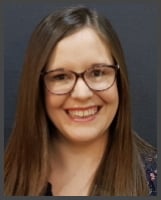There’s no doubt that the role of a PR and communications expert within a higher education institution is a demanding one.
Having to keep one foot firmly entrenched within all the comings and goings of their institution and the other foot in the wider world outside, and trying to marry the two. With multiple stakeholders to keep satisfied; students, applicants, faculty, Deans, corporate partners and alumni. It’s an exhaustive list.
This is never more evident than when faced with the challenge of representing all of this fairly on your institution’s website.
An institution’s website is expected to cover a lot of different priorities – whether catering to potential applicants, attracting new faculty, supporting institutional activities, profiling influential staff, highlighting research expertise and specialisms… The list goes on.
And as for the latter, higher education institutions (particularly business schools) are spoiled for choice with an overwhelming amount of intellect and insight to share across a huge variety of sectors and specialisms. It’s a wonderful problem to have – but it is a problem nonetheless.
And, whilst to someone inside your institution it might be easy to navigate your website to find what you’re looking for, for an external user it can be near impossible.
Put yourself in an applicant’s shoes – or potential new faculty member, investor or even a journalist’s shoes. Do they know where to go to find what they’re looking for?
Last week, my colleague Stephanie Mullins and I hosted a webinar, looking at how higher education institutions can get the most out of their web content through optimisation – designed to help communications professionals present their institutions online in the most effective way possible.
There’s a lot that can be said on the topic of optimisation, and lots of it straying into very technical areas. However there are some basic steps to follow that, when employed correctly, can make a massive difference to the reach and impact your content has.
In our webinar we outlined four crucial steps to take to ensure the content on your website can be shared with, and seen by the right people. And, most importantly, provoke the right response. These are;
- Set a goal
- Get focused
- Optimise
- Amplify
Setting a goal
Your websites are expected to do a lot. Before you begin producing web content, consider what the overall goal might be – is it to boost interest in a programme and encourage applications? Perhaps it’s to showcase your commitment to CSR. Then consider how the content you’re producing will help your institution to reach that goal.
Get focused
All education institutions have a mission statement, a focus or niche that sets them apart from others. Agreeing your key focuses internally is a big help in reducing some of that pressure you feel when multiple parties are vying for your attention. Once this is established consider how is this represented through your website. Is your focus clear?
If your goal is to raise the profile of your research expertise then your first step is to make your considerable resources clear and easy to find. Set aside a page for faculty research and expertise – fill it with the latest publications, thought provoking content and insights from your faculty, and make that page easy to find for outsiders. Making faculty research easier to wade through, by categorising it by topic, or even in line with your School’s core objectives – to really hammer home your School’s identity for those not in “the know” is also a good move.
Visibility
Providing clear direction to campus or institution news, or faculty insight and expertise will instantly improve your approachability, and navigation. Focusing on key messaging begins to improve your clarity – so people (be they applicants, new faculty or media representatives) know who you are and what you stand for. This will help you to establish a solid reputation with those you wish to impress. But how will these people know to where find you? In attracting new audiences, engaging in some basic SEO (the process through which you enable web content to be easily found online) is an absolute must.
And once your content has been perfected for your website, why stop there? The next step is to amplify your messages – with applicants, industry, trade bodies, potential investors and, vitally, the media.
And, of course, for more information and support, you can always get in touch!








